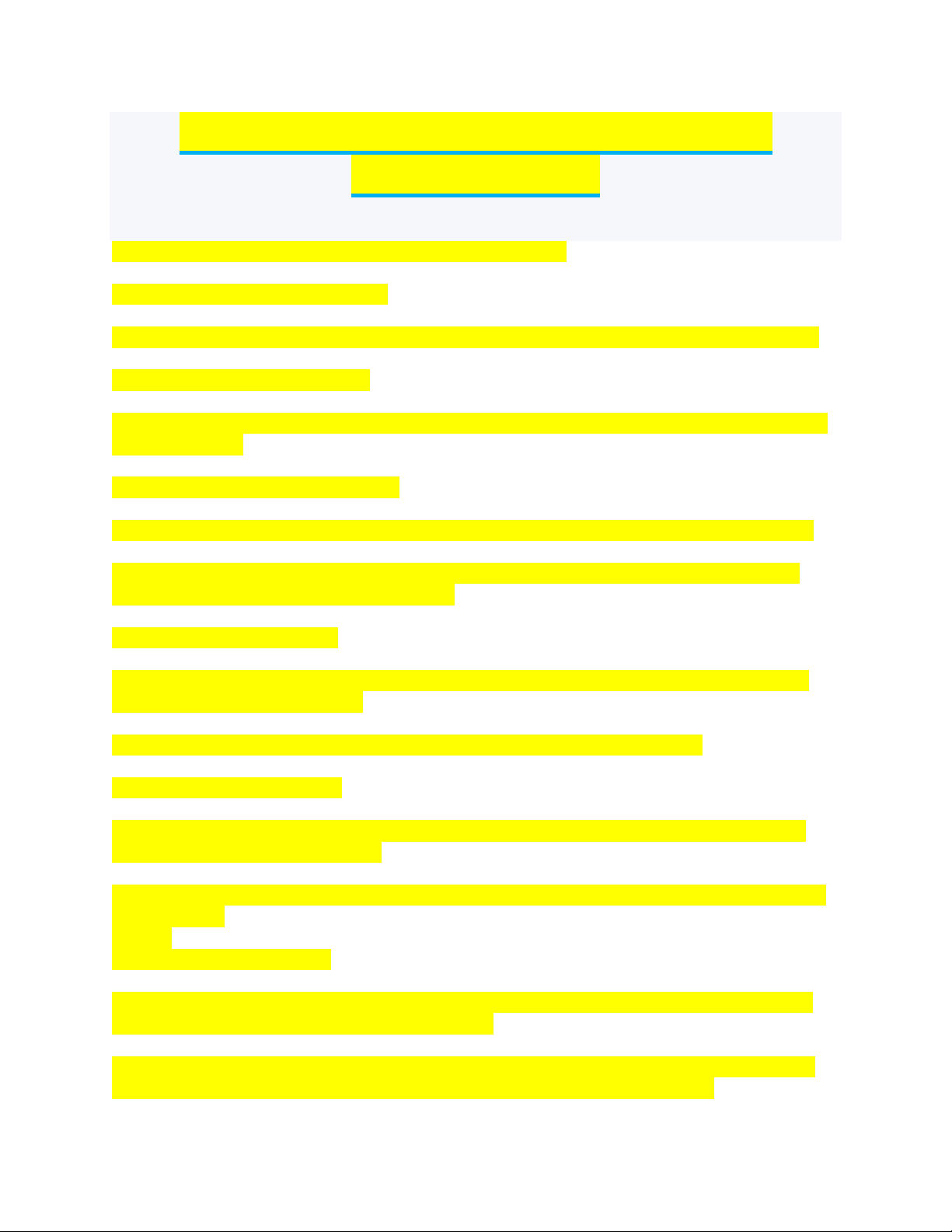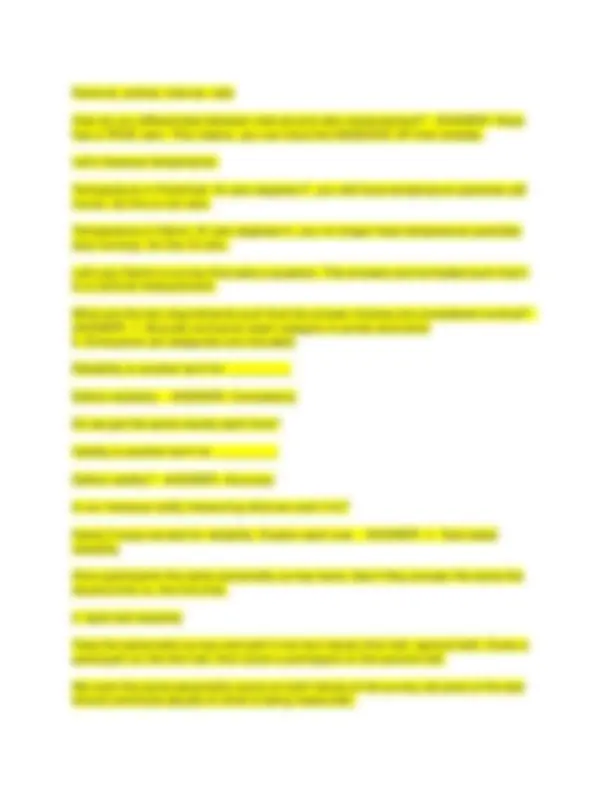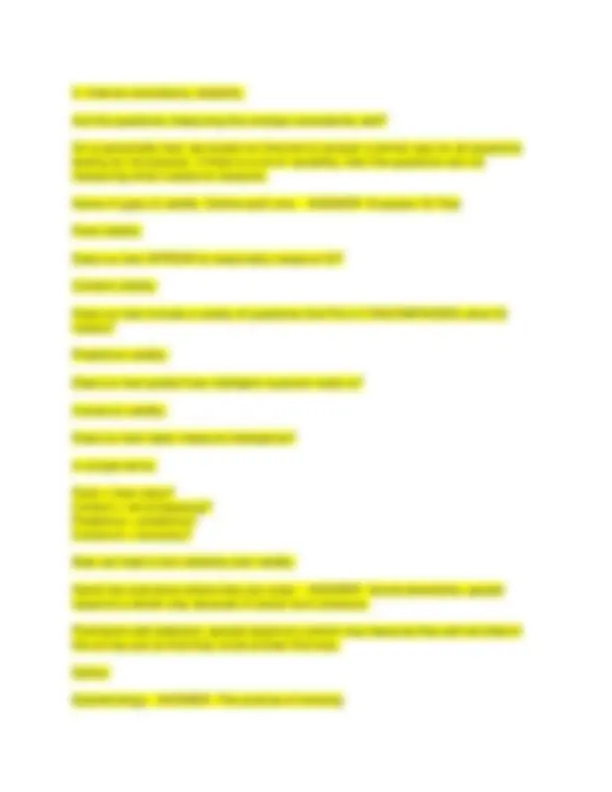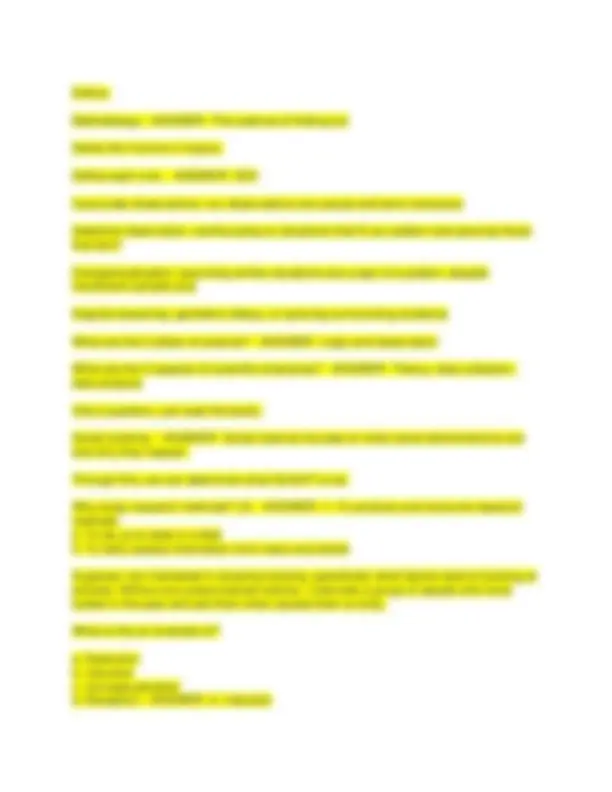






Study with the several resources on Docsity

Earn points by helping other students or get them with a premium plan


Prepare for your exams
Study with the several resources on Docsity

Earn points to download
Earn points by helping other students or get them with a premium plan
Community
Ask the community for help and clear up your study doubts
Discover the best universities in your country according to Docsity users
Free resources
Download our free guides on studying techniques, anxiety management strategies, and thesis advice from Docsity tutors
CMS 348 Exam 1 Questions With Answers 2025.pdf
Typology: Exams
1 / 8

This page cannot be seen from the preview
Don't miss anything!





What are the four goals of theory? - ANSWER- DEP. C Describe, explain, predict, control Differentiate conceptual vs operational. - ANSWER- Conceptual: Abstract / theoretical Operational: Concrete / precise Idiographic and nomothetic are two different approaches to describe something. (T/F) - ANSWER- True Define idiographic and nomothetic: Give examples for each. - ANSWER- Idiographic: IDIOSYNCRASIES. Specific things Example: A highly detailed personality questionaire that outputs 18,000 scales (one scale for each individual personality trait). Nomothetic: General things Example: A general personality test (the Big 5) that gives you 5 scales (one scale for each general personality trait). Define inductive and deductive. - ANSWER- Inductive: Data --> Theory. Deductive: Theory --> Data. Easy to remember: Deductive reasoning on exams — you start with an idea (theory) and arrive at your answer (data). There are 4 steps in the wheel of science. Name them, in order. - ANSWER- 1. Theory
What is the Nazi Medical War Crimes from 1939 - 1945? - ANSWER- They took concentration camp prisoners and exposed them to chemicals, extreme temperatures, and lit them in gasoline. Just horrible things. What was the Willowbrook study? - ANSWER- Willowbrook was a school that was conducting an experiment. They asked parents of kids for permission to infect their kids with hepatitis and watch their progression. As compensation, their kids would be allowed to join the overpopulated school. What was the Stanford Prison experiment? - ANSWER- They took participants and assigned them to prisoners and guards. The guards started getting violent... bad enough that the researchers had to call the study off WHO STARTED the Stanford Prison experiment? - ANSWER- Phil Zimbardo What were the Milgram Obedience experiments? - ANSWER- They made people (falsely) shock actors that answered word-pairs wrong. Multiple experiments where they would change variables to see how it affected obedience. Ex: did the actor stay in the room? Did the researcher wear a lab coat? etc. etc. What are the overarching rules for conducting ethical research? - ANSWER- 1. Do no harm to participants. If harm IS exerted, make sure the benefits outweigh the costs.
Define: Methodology - ANSWER- The science of finding out Name the 4 errors in inquiry. Define each one. - ANSWER- ISOI Inaccurate observations: our observations are casual and semi-conscious Selective observation: overfocusing on situations that fit our pattern and ignoring those that don't Overgeneralization: assuming similar situations are a sign of a pattern, despite insufficient sample size Illogical reasoning: gambler's fallacy, or ignoring surmounting evidence What are the 2 pillars of science? - ANSWER- Logic and observation What are the 3 aspects of scientific enterprise? - ANSWER- Theory, data collection, data analysis (Not a question, just read the back). Social science: - ANSWER- Social science focuses on what social phenomenons are and why they happen. Through this, we can determine what OUGHT to be. Why study research methods? (3) - ANSWER- 1. To produce and consume research methods
Cross-sectional is a survey taken at a specific point in time, while longitudinal is a survey taken at multiple points in time. What are the three types of longitudinal surveys? Define each one - ANSWER- Trend study: Monitoring a changing population Cohort study: Monitoring a changing subpopulation Panel study: Monitoring an unchanging sample What are the 9 stages of research, in order? - ANSWER- 1. Hypothesis